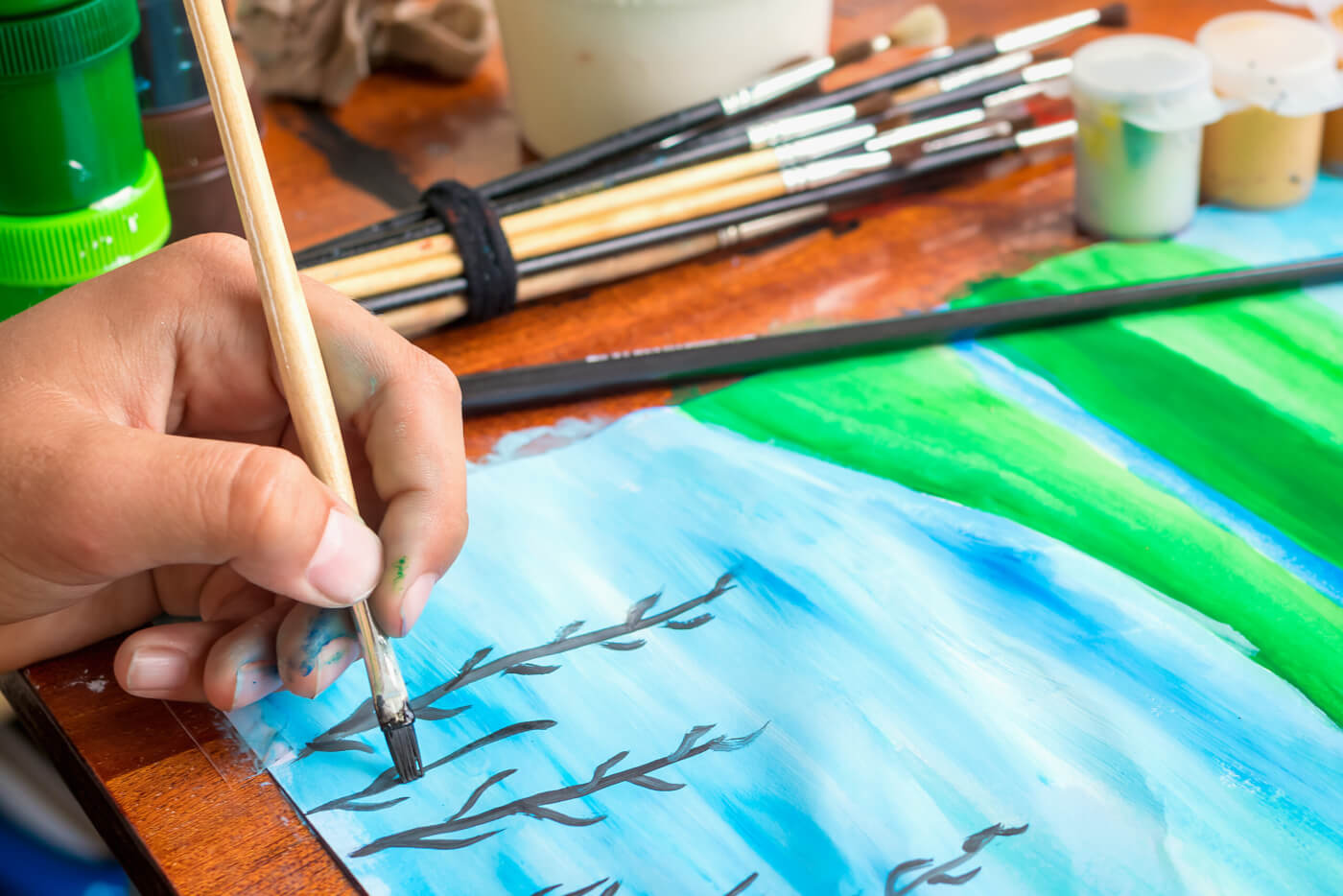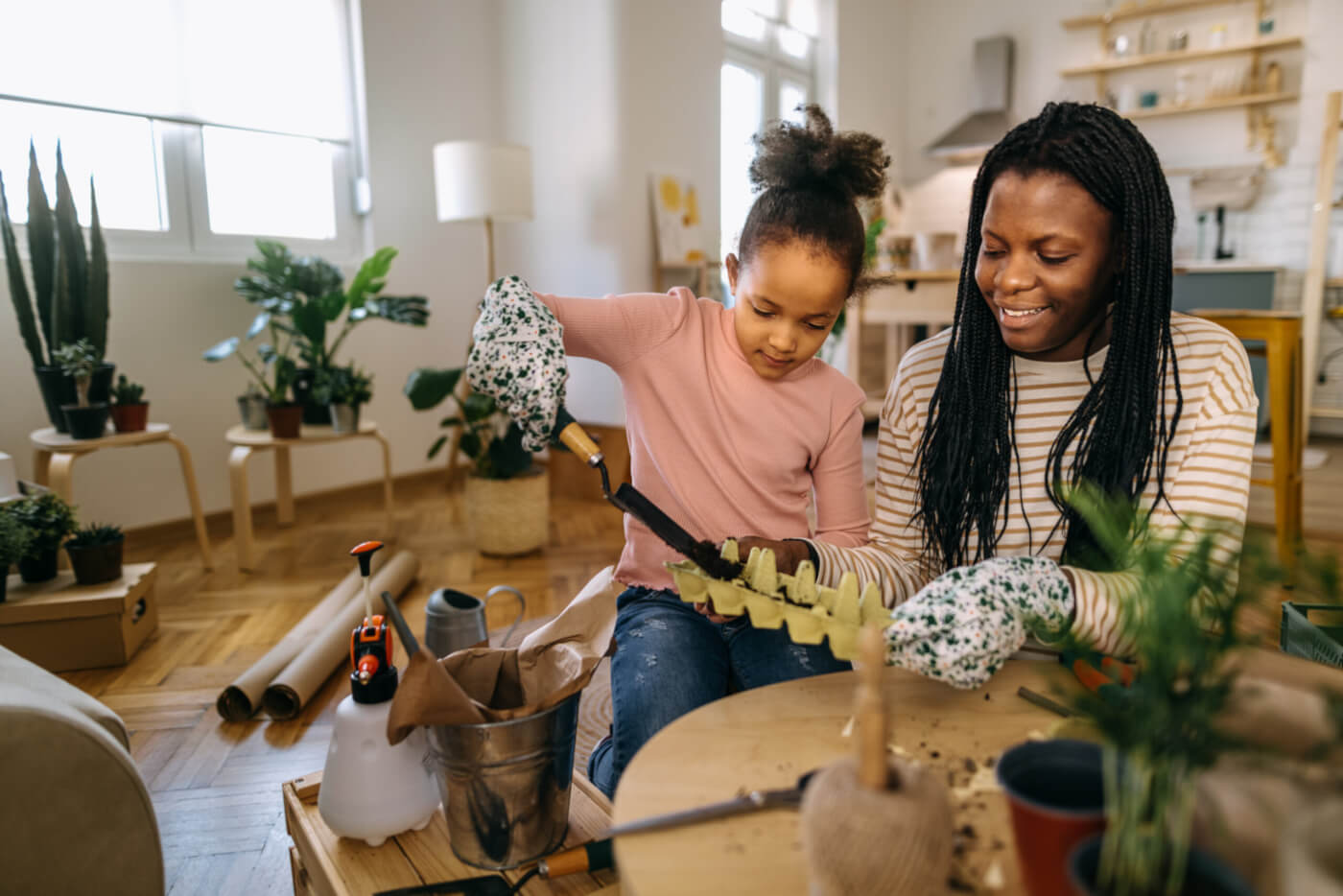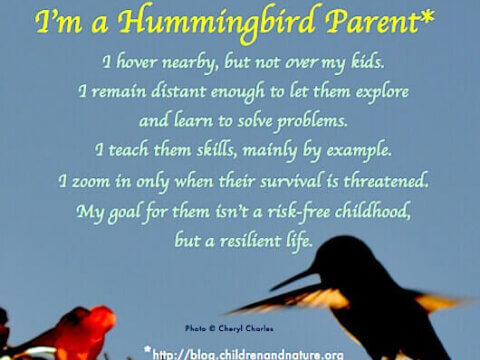Indoor expeditions: For when you really can’t go outside
Editor’s note: This guest column by author and Children & Nature Network co-founder Richard Louv is excerpted and adapted from his book, ”Vitamin N: The Essential Guide to a Nature-Rich Life.” We’re excited to share some of his tips for year-round nature-based fun and learning with the launch of this year’s Vitamin N Challenge.
In normal times, when you can find them, the Scandinavian saying applies: There’s no such thing as bad weather, only wrong clothes. But now and then, outside play isn’t an option – especially for kids, parents, and grandparents with asthma and other physical or mental health challenges.
In recent weeks, massive Canadian wildfires have filled much of North America with smoke. Meteorologists predict periodic heat domes and fires throughout the summer. When it’s just too hot or cold, or because of smoke or other air pollution, or if family members are unable to leave the home or classroom for health reasons, here are some ideas for how you can still connect with the natural world:
1. Set up a world-watching window.
Enjoy moon watching, stargazing, birdwatching and more, from inside your home or school. Keep handy: a nature notebook and, if you can afford them, binoculars, telescope, digital camera with a telephoto lens, backyard trail camera, and a recorder to capture the sounds of the natural world. Tech aside, use your eyes. And ears.
Suggested books: “Ultimate Explorer Field Guide: Night Sky” (National Geographic), “Bird Watch Book for Kids” (Dylanna Press), and the “Backyard Birdwatching” regional series (Cornell Lab Publishing Group). Online resource: Audubon’s Backyard Birding.
2. Take up cloudspotting.
Observe the different patterns and kinds of clouds. Gavin Pretor-Pinney launched the Cloud Appreciation Society in 2004. In “The Cloudspotter’s Guide” (TarcherPerigee), he expresses his passion for clouds, with a sense of humor: “At [t]he Cloud Appreciation Society we love clouds, we’re not ashamed to say it and we’ve had enough of people moaning about them.” The society’s manifesto makes a stand against “the banality of ‘blue-sky thinking.’” Cloudspotting is available to anyone, and it’s great for a child or adult in a hospital bed, or for someone with a disability that prevents them from going outdoors.
Recommended book: “The Cloudspotter’s Guide” (TarcherPerigee)
3. Become an extreme-weather expert.
It’s amazing how much drama you can see and experience from your own neighborhood. Follow the latest severe weather events on AccuWeather.com. Observe weather conditions around you and share your own meteorological stories and photographs on Instagram, Facebook or Pinterest’s “Wee Weather Watchers.”
Recommended books for kids: “Everything Weather: Facts, Photos, and Fun That Will Blow You Away” (National Geographic Kids); and “The Story of Climate Change” (Frances Lincoln Children’s Books).
4. Build your own regional nature library.
Make good use of your time indoors by learning more about the outdoors, especially the animals and plants native to your bioregion. Create a bioregional media center at home or at school with books and videos about nearby nature and about opportunities to explore it, including local guidebooks, biology handbooks, trail guides and topo maps. Spend some time planning future hikes and other outdoor adventures. Partner with your local library to help create one there, too.
One how-to resource for building community nature libraries comes from the United Kingdom’s Royal Society for the Protection of Birds: “Create a Community Nature Library.”
5. Keep an indoor/outdoor illustrated journal.
Encourage your kids or students to set up a table next to a window, with art supplies. Paint or draw the life and natural elements beyond the glass. Help your kids or students start indoor nature journals of drawings and personal writing about their indoor ecosystems. In her book “The Nature Connection” (Storey Publishing), naturalist and artist Clare Walker Leslie writes, “I often draw little landscapes in places where nature seems hard to find—out a classroom window, along a highway, or outside a hotel. Do you remember ‘Where’s Waldo?’ If you look, you’ll be surprised at what you might find.”
Suggested book: “The Nature Connection” (Storey Publishing)

6. Start a windowsill garden.
No matter how cold or hot it is, you and your kids can start a simple indoor garden using an egg, milk, or juice carton. Cut the carton in half, fill partway with soil, add a few seeds, place on a windowsill or other sunny spot, water, and see what grows.
Recommended book: “I Love Dirt!: 52 Activities to Help You and Your Kids Discover the Wonders of Nature” (Roost Books). Recommended resource from MasterClass: “How to Start a Windowsill Garden.”
7. Grow a radish inside a balloon.
Put a funnel in the neck of a clear balloon and pour in a half cup of dirt. Then add a quarter cup of water and a few radish seeds. Blow the balloon up, tie it off, and hang it in a window where it will get ample sunlight. The balloon serves as a greenhouse, and the radish will grow quickly.
More information on this Balloon Greenhouse page from Education.com.
8. Build a houseplant tree house.
While your family is dreaming about warmer days, show your kids how to build a houseplant tree house — but let them do the heavy lifting — using small sticks, tongue depressors, or Popsicle sticks. Then assemble the items in a favorite ficus or other large potted plant. This miniature can serve as a blueprint for building a full-scale tree fort when spring arrives.
More detailed instructions for houseplant tree houses can be found on this Imagine Childhood blog post.
9. Help create the Homegrown National Park.
That’s the dream of Doug Tallamy, whose books “Bringing Nature Home” and “Nature’s Best Hope” I enthusiastically recommend. While stuck indoors, learn about the native plants in your bioregion; identify local nurseries that sell native plants; buy native seeds or seedlings and give them a head start in your home or classroom. When planting season comes, replace lawns, the edges of soccer fields, and your school’s green schoolyard (if you’re lucky enough to have one) with the Indigenous plants. Now, watch native insects and the animals in their native food chain return. Why not help start a Worldwide Homegrown Park, by partnering with schools and families in other countries? As biodiversity returns, trade photos, photos, and drawings with your fellow native plant enthusiasts online.
Suggested books: “Bringing Nature Home” (Timber Press), “Nature’s Best Hope” (Timber Press) and “Nature’s Best Hope (Young Readers Edition): How You Can Save the World in Your Own Yard” (Timber Press). Additional online resources at homegrownnationalpark.com.
10. Go on an insect safari in your home.
Your children or students may be surprised (and pleasantly grossed out) to discover just how many species of bugs are living in the nooks and crannies of a house, apartment or school. To identify secret roommates, and make friends and influence enemies, consult a regional insect site or find an online resource.
Online resources: The Finding Urban Nature section of National Geographic’s website. WebMD.com offers a guide, “Yikes! Meet the Bugs That Live in Your House.”
11. Raise a praying mantis.
Mantises are among the strangest and most fascinating insects. Their eggs can be acquired from online retailers, and they’re fairly easy to raise (and release outside). KeepingInsects.com offers this advice, and more: Keep a mantis in a terrarium or cage with substrate that can absorb water, such as tissue paper, potting earth, pieces of bark, or sand. This helps keep the humidity more constant. Place branches or twigs for the mantis to climb; and occasionally feed it live insects (you can offer it the food with tweezers). Fair warning: If you have both male and female praying mantises, they may not be the best domestic role models.
Recommended online resource: Praying mantis and other bugs are covered on KeepingInsects.com.
12. Keep insect-eating plants.
Carnivorous plants can add excitement to your family’s indoor garden. Better Homes & Gardens advises: “Insect-eating plants need high humidity, bright (but not direct) light, and a special growing medium that is moist and acidic.” Do not feed your insect-eating plants hamburger or other meats (too much protein); they prefer flies and other small insects. They also attract neighborhood kids. Should your carnivorous plant ever say, “Feed me,” put it outside.
Check out “Growing Insect-Eating Plants Indoors” from Better Homes & Gardens.
13. Create a cold-weather sculpture from nature.
Help your child or students fill a Bundt cake pan or similar container with water. Let your kids place leaves and other natural items inside it, put it in the freezer, unmold and hang it outside with string on a cold day.
Recommended book: “Get Outside Guide: All Things Adventure, Exploration, and Fun!” (National Geographic Kids).
14. Create a tabletop biosphere.
Turn a jar into a self-sustaining closed ecosystem. Among the ingredients to include: hornwort (a plant), freshwater shrimp, snails, tap water dechlorinator, freshwater nutrient minerals, pond water (containing small, shrimplike invertebrates). Fill the jar almost to the top with dechlorinated water and seal.
Full instructions are available at this project from Make: Magazine.
15. Make a worm terrarium.
No need to buy an expensive glass tank. Wash out a standard two-liter soda bottle and fill it with alternating layers of sand, dirt and leaves. Introduce worms, and watch as they blend the layers together.
Online resource: How to Make a Worm Habitat (wikihow.com).
16. Set up an aquarium.
Freshwater aquariums need careful preparation to set up, but they are easier to maintain than saltwater aquariums. Pick a 20 to 55 gallon tank, and buy other essentials like gravel or sand, a filter, water plants, decorations, a water dechlorinator, and, of course, fish.
Recommended book: Animal Planet’s “Your First Aquarium” (Animal Planet Pet Care Library).
17. Raise a butterfly indoors.
Collect a butterfly egg by trimming off the section of plant it’s attached to. Put this clipping in a small, airtight container and wait three to seven days for the egg to hatch. Once the caterpillar starts to grow, transfer it to a larger plastic container with fresh foliage. Do not perforate the lid. Open the container daily to clean out the droppings and dead leaves. When the caterpillar is fully grown, add a stick to the container. The caterpillar will attach to it and form a chrysalis. Cut a hole in the lid to hold the stick vertically and wait for the butterfly to emerge — and then release it into the wild.
Recommended books: “Nature’s Notes” (Willow Creek Books) and “The Bumper Book of Nature: A User’s Guide to the Great Outdoors” (Crown).
18. Put nature back on the calendar.
Take some time now to plan for when you’re headed outdoors again. A couple books can help you do that. One of them is Linda Åkeson McGurk’s “There’s No Such Thing as Bad Weather: A Scandinavian Mom’s Secrets for Raising Healthy, Resilient, and Confident Kids” (Touchstone).
And of course, there’s “Vitamin N: The Essential Guide to a Nature-Rich Life” (Algonquin Books), which shares 500 ways for families, schools and communities to help all of us get outside most of the time, and to bring nature inside some of the time.
-
Network News
POLICY UPDATE: Policy and advocacy for the children and nature movement
-
Voices
Binoculars, bald eagles and my journey as a Black birder
-
Richard Louv
THE WONDER BOWL: Ten Spring and Summer Nature Activities for Kids and Adults
-
Network News
Minneapolis Spotlight: The promise and possibilities of parks for youth
-
Voices
Why nature is my motherhood ally








Commentaries on the C&NN website are offered to share diverse points-of-view from the global children and nature movement and to encourage new thinking and debate. The views and opinions expressed are those of the author(s) and do not necessarily reflect the position of C&NN. C&NN does not officially endorse every statement, report or product mentioned.